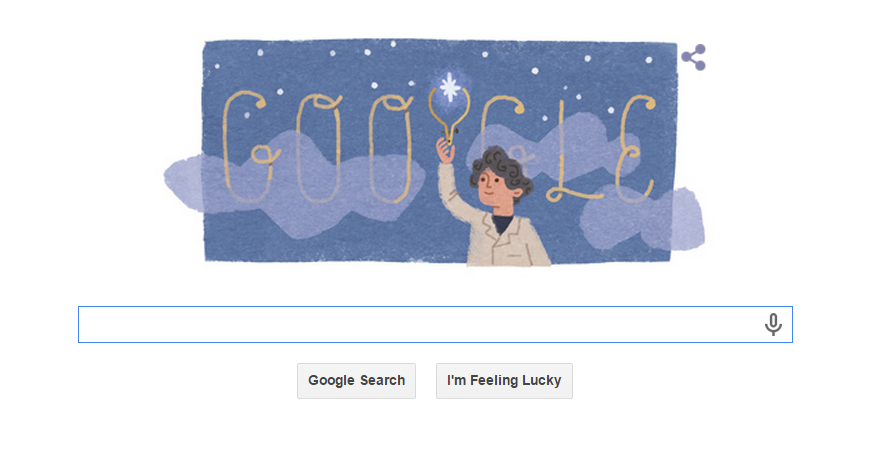Google Doodle Honors Pioneering Astronomer Annie Jump Cannon

Google turned its eyes to stars today — the front-page Google doodle is an illustration in honor of the 151st birthday of Annie Jump Cannon, the astronomer who came up with the modern system for classifying stars.
Born in 1863, Cannon had an insatiable appetite for astronomy: she studied and classified hundreds of thousands of stars in her lifetime. The star classification system she devised — still used today — consists of 7 categories, each indicated by a letter: O, B, A, F, G, K, M. Students of astronomy will remember the mnemonic device to recall these letters: "Oh, Be A Fine Gal/Guy — Kiss Me!"
Annie Jump Cannon began working at the Harvard College Observatory in 1896, along with a group of other female astronomers known as "Pickering's Women," after the observatory's director Edward Pickering. The group was tasked with studying, indexing and classifying as many stars as possible — but at the time, there was no standard stellar classification system. A few of Cannon's colleagues tried to devise systems of their own, but it was Cannon's system that stuck. [Take the Star Quiz]
In Cannon's system, our sun is a G star, which indicates a star with a yellowish or whitish color. OB stars are bluer, while most M stars have a reddish hue (two additional letters were later added for even redder stars). A star's color is determined by its composition, and astronomers can use the light from a star to get a detailed list of the chemical elements the star is made of. Cannon's system has since been expanded, so our sun's full classification label is a G2V star, with 2 acting as an indicator of its temperature and V an indicator of its luminosity.

Cannon retired in 1940 at the age of 76, and died on April 13, 1941.
Follow Calla Cofield @callacofield. Follow us @Spacedotcom, Facebook and Google+. Original article on Space.com.
Get the Space.com Newsletter
Breaking space news, the latest updates on rocket launches, skywatching events and more!
Join our Space Forums to keep talking space on the latest missions, night sky and more! And if you have a news tip, correction or comment, let us know at: community@space.com.

Calla Cofield joined Space.com's crew in October 2014. She enjoys writing about black holes, exploding stars, ripples in space-time, science in comic books, and all the mysteries of the cosmos. Prior to joining Space.com Calla worked as a freelance writer, with her work appearing in APS News, Symmetry magazine, Scientific American, Nature News, Physics World, and others. From 2010 to 2014 she was a producer for The Physics Central Podcast. Previously, Calla worked at the American Museum of Natural History in New York City (hands down the best office building ever) and SLAC National Accelerator Laboratory in California. Calla studied physics at the University of Massachusetts, Amherst and is originally from Sandy, Utah. In 2018, Calla left Space.com to join NASA's Jet Propulsion Laboratory media team where she oversees astronomy, physics, exoplanets and the Cold Atom Lab mission. She has been underground at three of the largest particle accelerators in the world and would really like to know what the heck dark matter is. Contact Calla via: E-Mail – Twitter